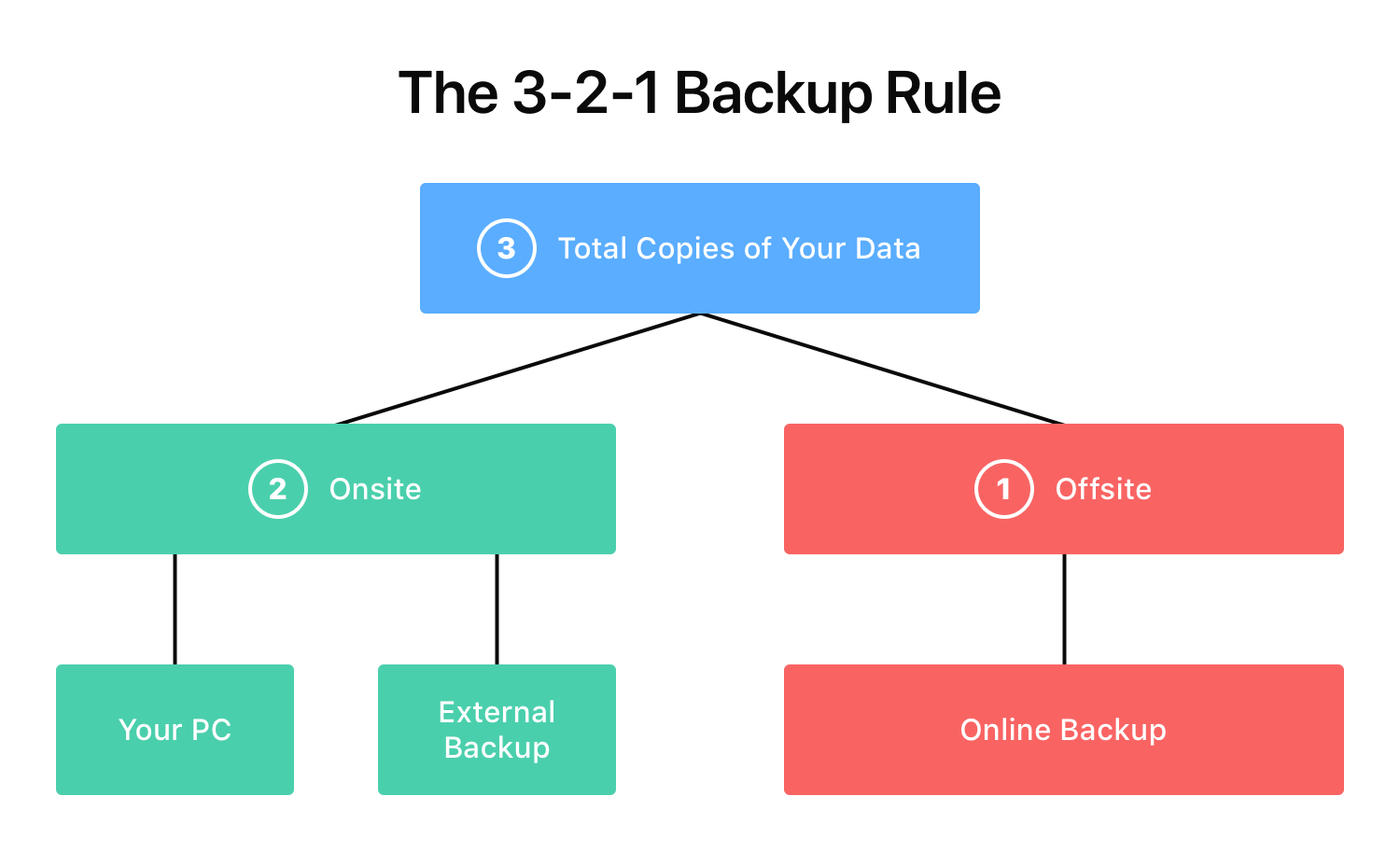What is the 3-2-1 backup rule?
It is essential to back up your files. Having an up-to-date backup prevents you from losing data if your computer becomes damaged, lost, or compromised. For example, if your computer becomes infected by ransomware, a recent backup can save the day.
The 3-2-1 backup rule is a popular backup practice. It involves creating and maintaining:
- Three total copies of your data
- Two local copies — your original files and a backup stored on an external hard drive
- One offsite copy — such as a cloud-based backup

Why is 3-2-1 a good backup method?
Backing up your data using the 3-2-1 backup method provides both convenience and redundancy in the event you have to restore your files. The 3-2-1 method is convenient in that it produces one onsite, easily-accessible backup, which will typically be all you need to restore your files. It is unlikely that your PC and your onsite backup will ever both fail at the same time.
However, the 3-2-1 method is redundant in that even if both your PC and your onsite backup are corrupted, stolen, damaged (such as in the event of a natural disaster), or misplaced, you can still restore your files from your offsite backup. If your offsite backup is cloud-based, you can even restore your files while traveling or otherwise separated from your onsite backup.
What does the 3-2-1 backup method look like in practice?
For a Windows user, the 3-2-1 backup method might involve maintaining:
- Your original files
- A backup stored on an external hard drive, using a backup application like Acronis Cyber Protect Home Office or AOMEI Backuper
- A cloud-based backup, using Backblaze, Acronis Cyber Protect Home Office, or IDrive
For a Mac user, the 3-2-1 backup method might involve maintaining:
- Your original files
- A backup stored on an external hard drive, using macOS's built-in Time Machine backup application
- A cloud-based backup, using Backblaze, Acronis Cyber Protect Home Office, or IDrive
NOTE: While the 3-2-1 backup method is sufficient for the average PC user, enterprise organizations and those who want to further protect their data may want to create even more backups. For example, you may want to create additional cloud-based backups using a different backup service, in case your first backup service goes down.